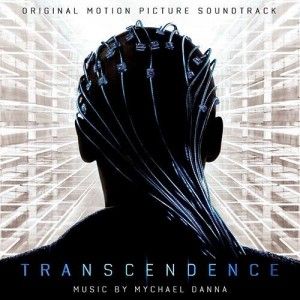http://innergameofaging.com/iga36


This film was compiled from audio of a discussion futurist FM-2030 held at the University of California on February 6th, 1994. In this discussion 2030 laid out an overview of his ‘transhuman’ philosophy and held a back and forth with other people present in the discussion. Discussion and debate included items such as the value of researching ‘indefinite lifespan’ technologies directly as opposed to (or in addition to) more traditional approaches, such as researching cures for specific diseases.
The excerpts in this archive file present a sort of thesis of FM 2030’s transhuman ideas.
About FM 2030: FM 2030 was at various points in his life, an Iranian Olympic basketball player, a diplomat, a university teacher, and a corporate consultant. He developed his views on transhumanism in the 1960s and evolved them over the next thirty-something years. He was placed in cryonic suspension July 8th, 2000. For more information about FM 2030, view the GPA Archive File: ‘Introduction to FM 2030′ or visit some of the following links:
Wikipedia:
en.wikipedia.org/wiki/FM-2030
Institute for Ethics & Emerging Technologies:
ieet.org/index.php/tpwiki/Transhuman
The New York Times:
nytimes.com/2000/07/11/us/futurist-known-as-fm-2030-is-dead-at-69.html

Bioquark Inc. (www.bioquark.com) Interview in MoneyWeek
Read whole story: http://moneyweek.com/who-wants-to-live-forever/

Bioquark, Inc., (http://www.bioquark.com) a life sciences company focused on the development of novel, natural bio-products for health, wellness and rejuvenation, has entered a collaboration whereby Forest Organics LLC & I-Beauty Charm LLC, a unique, integrated facial and body cosmetology facility, and their state-licensed, highly skilled skin care specialists, will be utilizing novel, natural Bioquantine™ extract complexes as part of their spa procedures, as well as providing consumer access to a range of proprietary skin care products (http://www.forestorganics.life).
“We are very excited about this first company collaboration in the area of beauty care and cosmetology,” said Ira S. Pastor, CEO, Bioquark Inc. “It is another step forward towards the wide applicability of our natural combinatorial bio-products, across a broad range of health and wellness segments, as well as future franchise opportunities.”
The integrated Forest Organics LLC & I-Beauty Charm LLC model was conceived by local Tampa business women, Nadia Goetzinger and Tatyana Reshetnikova, to offer a new generation of products and services related to skin beautification and rejuvenation.
“We look forward to working closely with Bioquark Inc. on this initiative and providing an exclusive range of services and products to customers throughout the greater Tampa metropolitan area,” said Ms. Goetzinger”

About Bioquark, Inc.
Bioquark Inc. is focused on the development of natural biologic based products, services, and technologies, with the goal of curing a wide range of diseases, as well as effecting complex regeneration. Bioquark is developing both biopharmaceutical candidates, as well as non-Rx products for the global consumer health and wellness market segments.
About Forest Organics LLC & I-Beauty Charm LLC
Forest Organics LLC & I-Beauty Charm LLC operate a unique, integrated facial and body cosmetology facility providing novel rejuvenative spa and cosmetology services and products.

Bioquark, Inc., (http://www.bioquark.com) a company focused on the development of novel biologics for complex regeneration and disease reversion, and Revita Life Sciences, (http://revitalife.co.in) a biotechnology company focused on translational therapeutic applications of autologous stem cells, have announced that they have received IRB approval for a study focusing on a novel combinatorial approach to clinical intervention in the state of brain death in humans.
This first trial, within the portfolio of Bioquark’s Reanima Project (http://www.reanima.tech) is entitled “Non-randomized, Open-labeled, Interventional, Single Group, Proof of Concept Study With Multi-modality Approach in Cases of Brain Death Due to Traumatic Brain Injury Having Diffuse Axonal Injury” (https://clinicaltrials.gov/ct2/show/NCT02742857?term=bioquark&rank=1), will enroll an initial 20 subjects, and be conducted at Anupam Hospital in Rudrapur, Uttarakhand India.
“We are very excited about the approval of our protocol,” said Ira S. Pastor, CEO, Bioquark Inc. “With the convergence of the disciplines of regenerative biology, cognitive neuroscience, and clinical resuscitation, we are poised to delve into an area of scientific understanding previously inaccessible with existing technologies.”
Death is defined as the termination of all biological functions that sustain a living organism. Brain death, the complete and irreversible loss of brain function (including involuntary activity necessary to sustain life) as defined in the 1968 report of the Ad Hoc Committee of the Harvard Medical School, is the legal definition of human death in most countries around the world. Either directly through trauma, or indirectly through secondary disease indications, brain death is the final pathological state that over 60 million people globally transfer through each year.
While human beings lack substantial regenerative capabilities in the CNS, many non-human species, such as amphibians, planarians, and certain fish, can repair, regenerate and remodel substantial portions of their brain and brain stem even after critical life-threatening trauma.
Additionally, recent studies on complex brain regeneration in these organisms, have highlighted unique findings in relation to the storage of memories following destruction of the entire brain, which may have wide ranging implications for our understanding of consciousness and the stability of memory persistence.
“Through our study, we will gain unique insights into the state of human brain death, which will have important connections to future therapeutic development for other severe disorders of consciousness, such as coma, and the vegetative and minimally conscious states, as well as a range of degenerative CNS conditions, including Alzheimer’s and Parkinson’s disease,” said Dr. Sergei Paylian, Founder, President, and Chief Science Officer of Bioquark Inc.
Over the years, clinical science has focused heavily on preventing such life and death transitions and made some initial progress with suspended animation technologies, such as therapeutic hypothermia. However, once humans transition through the brain death window, currently defined by the medical establishment as “irreversible”, they are technically no longer alive, despite the fact that human bodies can still circulate blood, digest food, excrete waste, balance hormones, grow, sexually mature, heal wounds, spike a fever, and gestate and deliver a baby. It is even acknowledged by thought leaders that recently brain dead humans still may have residual blood flow and electrical nests of activity in their brains, just not enough to allow for an integrated functioning of the organism as a whole.
“We look forward to working closely with Bioquark Inc. on this cutting edge clinical initiative,” said Dr. Himanshu Bansal, Managing Director of Revita Life Sciences.
About Bioquark, Inc.
Bioquark Inc. is focused on the development of natural biologic based products, services, and technologies, with the goal of curing a wide range of diseases, as well as effecting complex regeneration. Bioquark is developing both biological pharmaceutical candidates, as well as products for the global consumer health and wellness market segments.
About Revita Life Sciences
Revita Life Sciences is a biotechnology company focused on the development of stem cell therapies that target areas of significant unmet medical need. Revita is led by Dr. Himanshu Bansal MD, PhD. who has spent over two decades developing novel MRI based classifications of spinal cord injuries as well as comprehensive treatment protocols with autologous tissues including bone marrow stem cells, dural nerve grafts, nasal olfactory tissues, and omental transposition.

The growth of human and computer intelligence has triggered a barrage of dire predictions about the rise of super intelligence and the singularity. But some retain their skepticism, including Dr. Michael Shermer, a science historian and founding publisher of Skeptic Magazine.
The reason so many rational people put forward hypotheses that are more hype than high tech, Shermer says, is that being smart and educated doesn’t protect anyone from believing in “weird things.” In fact, sometimes smart and educated people are better at rationalizing beliefs that they hold for not-so-rational reasons. The smarter and more educated you are, the better able you are to find evidence to support what you want to be true, suggests Shermer.
“This explains why Nobel Prize winners speak about areas they know nothing about with great confidence and are sure that they’re right. Just because they have this great confidence of being able to do that (is) a reminder that they’re more like lawyers than scientists in trying to marshal a case for their client,” Shermer said. “(Lawyers) just put together the evidence, as much as you can, in support of your client and get rid of the negative evidence. In science you’re not allowed to do that, you’re supposed to look at all the evidence, including the counter evidence to your theory.”
The root of many of these false hypotheses, Shermer believes, is based in religion. Using immortality as an example, Shermer said the desire to live forever has strong parallels to religious beliefs; however, while there are many making prophecies that technology will insure we’ll live forever, too many people in groups throughout history have made similar yet unfulfilled promises.
“What we’d like to be true is not necessarily what is true, so the burden of proof is on them to go ahead and make the case. Like the cryonics people…they make certain claims that this or that technology is going to revive people that are frozen later…I hope they do it, but you’ve got to prove otherwise. You have to show that you can actually do that.”
Even if we do find a way to live forever, Shermer notes the negatives may outweigh the positives. It’s not just living longer that we want to achieve, but living longer at a high quality of life. There’s not much benefit in living to age 150, he adds, if one is bedridden for 20 or 30 years.
Instead, Shermer compares the process to the evolution of the automobile. While the flying cars promised by 1950’s-era futurists haven’t come to pass, today’s automobile is exponentially smarter and safer than those made 50 or 60 years ago. While forward thinkers have had moments of lucid foresight, humans also have a history of making technology predictions that often don’t turn out to be realized. Often, as is the case with the automobile, we don’t notice differences in technological changes because the changes happen incrementally each year.
“That’s what’s really happening with health and longevity. We’re just creeping up the ladder slowly but surely. We’ve seen hip replacements, organ transplants, better nutrition, exercise, and getting a better feel for what it takes to be healthy,” Shermer says. “The idea that we’re gonna’ have one big giant discovery made that’s going to change everything? I think that’s less likely than just small incremental things. A Utopian (society) where everybody gets to live forever and they’re infinitely happy and prosperous and so on? I think it’s unrealistic to think along those lines.”
Looking at the future of technology, Shermer is equally reticent to buy in to the predictions of artificial intelligence taking over the world. “I think the concern about AI turning evil (and) this dystopian, science fiction perspective is again, not really grounded in reality. I’m an AI optimist, but I don’t think the AI pessimists have any good arguments,” Shermer said
While we know, for the most part, which types of governments work well, we don’t have any similar precedent for complex AI systems. Humans will remain in control and, before we start passing laws and restrictions to curb AI out of fear, Shermer believes we should keep improving our computers and artificial intelligence to make life better, evaluating and taking action as these systems continue to evolve.

I have spent the last 30 years in various aspects of the biopharmaceutical industry, which for the most part has been a very rewarding experience.
However, during this time period, having been immersed many different components of therapeutic development and commercialization, one thing has always bothered me: a wide array of promising research never makes it off the bench to see the translational light of day, and gets lost in the historical scientific archives.
I always believed that scientific progress happened in a very linear narrative, with each new discovery supporting the next, resulting ultimately in an eventual stairway of scientific enlightenment.
What the reality turned out to be was much more of a fragmented, research “evolutionary tree”, with dozens of potential pathways, only very few branches of which ever resulted in scientific maturity, and not always the most fruitful ones by any means.
The premature extinction of these promising discovery pathways were the result of a variety of factors, including, but not limited to, funding priorities, competing industrial interests, “out of vogue” concepts, lack of intellectual properties, non-existent regulatory models, conflicted legislative initiatives, and even religious implications.
In 2016, as in previous years, we continue to see these “valleys of death” swallow up pathways of scientific possibility, with few popular segments attracting the majority of attention and support.
The preponderance of resources focused on the somatic mutation model of carcinogenesis, despite an endless range of research highlighting that the disease is extremely heterogenic and rarely ever follows such a clonal model, is one example that continues to be inappropriately manifested in the oncology system, decades into the “war on cancer”.
On a similar plane, the jettisoning of most studies of the biophysical aspects of human genetics, despite the gross incompleteness offered by the central dogma to explain higher biological form and function, is another example that has become all too pervasive in the research community.
And then there are the areas of human consciousness, memory, and information processing / storage, where in many ways we are still operating in the dark ages, with materialists and dualists battling it out for centuries.
One topic that I have written quite a bit about is that of death, specifically that of the death of the human brain — http://www.singularityweblog.com/is-death-reversible/
While I am a staunch supporter and advocate of the life-extension / anti-aging movement, I am equally vocal about our need to develop technologies, products, and services that can actually reverse our ultimate transition between the living and dead states, a transition that occurs annually for 60 million humans around the globe.
Death, however, is unfortunately seen by many as a natural, biological progression for human beings, and in many circles, deemed an unnecessary area of scientific research and exploration.
I beg to differ.
Far too often, death arrives too early and too unexpectedly for many of us and our loved ones. And the best modern medicine has to offer today is “Sorry. There is nothing else we can do.”
But what if there was?
There are a variety of species across the natural world that are capable of regenerating and repairing themselves from forms of severe CNS damage that bring them to the transitional grey zone between life and death. Along the evolutionary timeline however, this ability gradually disappeared hundreds of millions of years ago and does not manifest in higher species.
Now, in the 21st century, with the convergence of the disciplines of regenerative biology, cognitive neuroscience, and clinical resuscitation, we may finally be poised to take back these capabilities for humans.
Over the years, clinical science has focused heavily on preventing such life and death transitions and made some initial progress with suspended animation technologies, such as therapeutic hypothermia. But once we transition through the brain death window, currently defined by the medical establishment as “irreversible” (per the 1968 Ad Hoc Committee of the Harvard Medical School definition), we are technically no longer alive.
To add insult to injury, a human can be declared dead, even while our bodies can still circulate blood, digest food, excrete waste, balance hormones, grow, sexually mature, heal wounds, spike a fever, and gestate and deliver a baby. It is even acknowledged by thought leaders that recently brain dead humans still may have residual blood flow and electrical nests of activity in their brains, just not enough to allow for an integrated functioning of the organism as a whole.
Several prominent cases in the media over the past few years have further served to highlight the current situation, as well as the substantial anatomical and functional differences between the state known as brain death, and other severe disorders of consciousness, such as coma, and the vegetative and minimally conscious states.
It is now time to take the necessary steps to provide new possibilities of hope, in order to counter the pain, sorrow, and grief that is all too pervasive in the world when we experience a loved one’s unexpected or untimely death, due to lesions which might be potentially reversible with the application of promising neuro-regeneration and neuro-reanimation technologies and therapies.
It is time to undertake the required research, based on 2016 technological knowledge, in order to bring about such transformational change.
My name is Ira S. Pastor and I am the CEO of the biotechnology company Bioquark Inc.
Welcome to the unveiling of the Reanima project.

How has your work, your life, your humanity, been improved by the promise of Big Data?
What apps and online media do you use to upload personal and other info?
Singularity has flopped – that is to say, this week Johnny Depp’s new film Transcendence did not bring in as much as Pirates of the Caribbean. Though there may not have been big box office heat, there is heat behind the film’s subject: Big Data! Sure we miss seeing our affable pirate chasing treasure, but hats off to Mr. Depp who removed his Keith Richards make-up to risk chasing what might be the mightiest challenge of our century.
Singularity, coined by mathematician John von Neumann, is a heady mathematical concept tested by biotech predictions. Made popular by math and music wunderkindt turned gray hair guru of an AI movement Ray Kurzweil, Singularity is said to signify the increasing rate at which artificial intelligence will supersede human intelligence like a jealous sibling. Followers of the Singularity movement (yes, with guru comes followers) envision the time of override in the not to distant future with projections set early as 2017 and 2030. At these times, the dynamics of technology are said to set about a change in our biology, our civilization and “perhaps” nature itself. Within our current reach, we see signs of empowered tech acting out in the current human brain mapping quest and brain-computer interface systems. More to the point, there is an ever increasing onslaught of Google Alerts annoucing biotech enhancements with wearable tech. Yes indeed, here comes the age of smart prosthetics and our own AI upload of medical and personal data to the internet. Suddenly all those Selfies seem more than mere narcissistic postings against the imposing backdrop of Big Data.
Johnny Depp’s face says it all in Transcendence where Big Data determines our AI future wherein life as we know it, can and will exist online. Think beyond a 24/7 teenage plug into a smart phone or flash- driving Facebook entries. Think Neuromancer, VALIS, and Star Trek’s Borg — sci fi predecessors predicting memory transformations amounting to an existential reboot. Translated into the everyday, we’re talking more than just uploading your genetic code to 23andme. This is an imagined future where what we call “Me” will be psychologically and legally recognized as living online.
As a contemporary sci fi, Transcendence is filled with pentimento film tributes to Zombie and X-Men TakeOvers, Westerns and Romantic Tragedies. Pitting AI critics against AI visionaries, the film is a bioethics drama, where the prospect of creating online Selves will constitute a direct social threat with thoroughgoing eco consequences. At the center of the bioethics contest, we encounter the marriage and business partnership of Will and Eleanor Castor — the heroic scientist and the eco-activist whose death do us part vows are broken to unleash a future so thoroughly transformed by AI as to render biological existence “hacked” by internet code.
The romantic hubris of Transcendence is jolting with a Shakespearean twist: Dare to Upload yourself to the internet and threaten genealogy, global power. Wait, this is no Romeo and Juliet. Love and Death, Eros and Thanatos, as Herr Freud called it, stands at the center of this science fiction pivoting on Will Castor’s heroic martyrdom (played astutely by Johnny Depp). By the end of the film, we are forced to face the movie’s existential questions as moral and medical ones. With new sentient life living online, collective imagination for our biohumanity and ecosystem is left unhinged.

While the film lifts common AI themes of transformed “self-awareness” and “identity,” the real AI deal breaker in Transcendence, and in our own lives, is Time – biological, ecological and geologic. Described as a sequential and cyclical process, Time frames our present experience, shaping both memory and imagination of that present experience. As my Buddhist philosophy professor use to say: “When you are waiting for your lover, 10 minutes feels like 1 hour; but when your lover arrives, 1 hour feels like 10 minutes.” Cognitive neuroscientists tell us that episodic memory is at once measurable and elusive of metrics — researchers can study the sequence of what we remember (like learning our ABC’s) but they struggle to discover how it feels to remember the alphabet.
Time after Will Castor’s AI is not waiting for cognitive neuroscience to catch up with a hacker’s race to design new codes, new systems, and new products for regenerating uberhuman biosystems. After all, AI Time presumes the speed of downloads to the Internet and programming APPs as if to emulate the speed of light.
Before Einstein, Neuroscience, the Internet and Apps, Time was once thought of in mythic, primal terms of genesis. In Indian cosmology, Siva, the God of Time, dances on the back of mother earth, moving us through karmic cycles of birth, life, death and rebirth. In the ancient Greco-Roman cosmos, Time is born from Chronos the three headed serpent that gives us earth, sky and the underworld. Through the ages, Time / Chronos became associated with the cycle of seasons, assigning to the process of change in light and life, the name Father Time in contrast to quiet, deep Mother Earth, which seems to absorb the underworld into her womb.
Conceived as such, Father Time has given way to our current understanding of RAM and neural memory codes leaving Mother Earth to stand in for blood, bones and stem cells. Today as we couple with technology and look to Big Data for knowledge and insight, we lose sight of when, and how, we capitulate to a fundamental misperception: That we are one and the same with the technology we create. Blinded by the light and speed of computer gazing, we mistake ourselves for our creations. We forget difference and our humanity — even if coupled with technology. For the sake of a popular drama, Transcendence pushes on the consequences of this misperception by entertaining a bioethics war over regenerating biological tissue. Like I said, this is a flick with a nod to X-Men.
With computational neuroscience sitting at the center of this passion play, it is neurobiologist and bioethicist Max, the Castor’s closest friend and film’s narrator who reminds us that we are Time emergent and memories alone are not us. Memory may be coded for upload but it cannot fully account for the what and who we are as neuroplastic creatures with uncertain futures. Yes, we are more than just code. As the father of American psychology William James once wrote, we draw from a world of “blooming buzzing confusion,” perceptions enriched with a variety of associated thoughts, sensations and reactions. That piece of wisdom may be more than a century old, but even if our behaviors might fit a statistical profile for behavioral economics, we are reminded: statistical profiles are not Us.
Coda:
Looking back to the late 1990’s, the call for the human-machine interface was met by both excitement and trepidation by frontier technologists and skeptical intellectuals. In my own backyard, I curated a 2003 symposium at Art Center College of Design with NASA scientists and a world famous cyborg, STELARC to discuss: What kind of science and technologies would push the design futures forward and would our imagined futures require the inevitable coupling of human and technology? Now more than 10 years later with advances in the Cloud, wearable tech and neuro-marketing, students have no greater skills for managing their union with the Borg. To paraphrase the thinking of my business partner, Gaynor Strachan Chun, ‘the problem is not with technology, but the way people behave with technology.’
Future Forward? Let’s skill up with the brain in mind to face the behavioral challenges with Big Data.
M. A. Greenstein, Ph.D., Lifeboat Advisor — Neuroscience / Diplomacy / Futures; Founder / Chairman, The George Greenstein Institute (GGI); Founder / Chief Innovation Officer, SM+ART
Some people become incredibly confused about the effort to eliminate aging, which they see as a nebulous, ill-defined process. I refer to the concept of radical life extension, when aging as a process has been abolished. I am not referring to simple healthy longevity (the effort to live a healthy life until the current maximum lifespan of 110–120). Here are some common misconceptions:
1. The Fallacy of words
Eliminating aging will make us ‘immortal’ and we will live forever.
No, it won’t. If we eliminate aging as a cause of death, we may be able to live for an indefinite (not infinite) period, until something else kills us. Even in a world without aging, death can happen at any time (at age 10, 65 or 1003) and for any reason (a shot in the head, malaria, drowning). If we manage to eliminate aging as a cause of death, the only certain thing would be that we will not necessarily die when we reach the currently maximum lifespan limit of around 110–120 years. We would certainly NOT live for ever, because something else will kill us sooner or later. Our organs cannot be repaired if we perish in a nuclear explosion for example, or in a fire. Some statisticians have mentioned that, without aging, we may be able to live to 1700–2000 years on average before death happens due to some other catastrophic damage. This is a long time, but it is not ‘forever’.
2. The Fallacy of numbers
Eliminating aging will result in overpopulation.
No, it won’t. This is based on spurious, even naïve, thinking. Aging happens because we need to reproduce. Or, we need to reproduce because we age. If aging is eliminated, the need to reproduce will also be broadly eliminated. It is a cyclical, reciprocal argument.
3. The Fallacy of loneliness
“I don’t want to live dramatically longer because I will have to witness the deaths of all my family and friends”.
No, you won’t. If you live longer because aging has been eliminated, then your family and friends will too. In any case, this counteracts fallacy number 2: if everybody else dies, how come we would have overpopulation? And fallacy number 2 counteracts this one: if we do have overpopulation, then it is likely that your friends and relatives will be alive too.
4. The Fallacy of the pill
Aging will be eliminated by taking a pill (or a combination of pills, injections, something physical).
No, it won’t. It will be eliminated through a change in the direction of human evolution, when billions of humans continue to engage with technology (or via other, abstract global technologically-dependent means). As the general direction of evolution is towards a more complex state which makes us better adapted to our environment, there would come a point when our hyper-technological environment would select individual longevity instead of aging and degeneration, as a more thermodynamically efficient situation.
5. The Fallacy of money
Research into the elimination of aging is not progressing fast due to lack of appropriate funding.
No, funding is not the main bottleneck. The main problem is the widespread adoption of the wrong approach. The idea that aging can be eliminate through pharmacological intervention dates back to the time of the Alchemists. It has no place in a modern, highly technological and intellectually sophisticated society, and certainly not with respect to defying such a fundamental process as aging. It is reductionist instead of integrative.
Aging may be eliminated when the cause for its presence is removed. Aging happens because within a tendency to progress from simple to complex, evolution has selected reproduction (and thus aging) as a mechanism for maximising the use of thermodynamical resources, and so to ensure the survival of the species
6. The Fallacy of the rich elite
Only a few rich people will have access to the treatment.
This is a combination of fallacies number 4 and 5, a fallacy based on fallacies. People who adapt and fit within an upwards moving technological environment will be more likely to survive. Money is irrelevant. What is relevant is intellectual effort and aggressive engagement with our environment (hyperconnectivity is an example). If a large number of humans (in the order of hundreds of millions) actively engage with their increasingly technological environment, there would be no reason to age/reproduce at the current rates, as survival can be assured through the individual rather than the species. Therefore, there could be no secrets about the process, due to the very fact that a significant section of humanity must necessarily participate.
7. The fallacy of frailty
Living dramatically longer will mean a long life with debilitating illnesses.
No, it won’t. The two concepts are mutually exclusive. A life without aging necessarily means a life without age-related degeneration. You cannot have one without the other.
In is now quite clear that aging is not a simple phenomenon and it will not be overcome by using simple approaches. We need to increase the complexity and sophistication of our efforts in order to be in a better position to develop strategies against it. For this reason, I set up the ELPIS Foundation for Indefinite Lifespans (www.elpisfil.org) which is a scientific research organisation aiming to study aging from a complex evolutionary perspective.
The foundation’s research methodology is based mainly upon the ELPIS hypothesis (www.elpistheory.info). The initials stand for ‘Extreme Lifespans through Perpetual –equalising Interventions’. I developed this hypothesis in 2010 whilst trying to examine the reason behind the presence of aging. It was clear that aging is not an essential component of our evolutionary development, and if we find ways to study why nature has developed it, we may then be able to eradicate it. Currently, the chances of us dying from aging are heavily against us. By developing suitable interventions, we may be able to equalise the odds against us dying (i.e. remove aging as a cause of death).
Our method is different from most existing approaches aiming to eliminate aging. We are mainly interested in the ‘connection-approach’ and not so much in the ‘component-approach’. We believe that it is important to study how the different components of the organism are interconnected and regulated, rather than just repair the individual components. It is the ‘why aging happens’ rather than the ‘how it happens’ that interests us most. In order to make this clear let me mention an analogy with poliomyelitis.
Polio
*How it happens? There is inflammation and necrosis leading to damage of motor neurons and, ultimately, muscle weakness and paralysis
* Why it happens? Because the poliovirus causes it
Aging
* How it happens? There is cellular and molecular damage through oxidation and glycation, as well as damage to mitochondria, DNA etc.
* Why it happens? Because evolution has selected reproduction (and thus aging) as a mechanism for maximising the use of thermodynamical resources, and so ensure the survival of the species.
In this analogy, the obvious cure for polio is to somehow eradicate the poliovirus itself, and not just keep repairing the already damaged motor neurons. And in the case of aging, the best tactic is to somehow change the reason why aging happens, instead of just keep repairing already existing damage.
Attempts such as SENS and similar, aim to repairing existing damage, were as we aim primarily to eliminate the evolutionary reasons behind aging in the first place. This is not to say that we are not at all interested in damage repair. In fact, one of our main projects deals with the repair problem. But, overall we want to explore the evolution of aging and not its secondary effects.
We see aging as a specific and well-defined process. Our aim is unambiguous: we seek to eliminate this particular process. By eliminating aging we will have a life without age-related disease and degeneration, and a lifespan without a predetermined end. We do not seek immortality. In order to be immortal, one has to totally and permanently eliminate all causes of death (not just reduce their incidence). We seek to eliminate aging as one of the causes of death. People will still die from any other cause. In this case, our lifespan would be ‘indefinite’ because the current absolute limit of around 110–120 years will be lifted. There would not be a pre-defined limit; therefore the lifespan would be indefinite. It will not be infinite. This distinction is crucial because it clarifies any ambiguity and vagueness in the terminology. We do not seek eternal youth. We merely concentrate on the process of aging as one of the many other causes of death, the same as other researchers concentrate on the cure for cancer or the cure for HIV infection.
Within ELPIs Foundation we have scientific advisors from a wide range of disciplines, including biomedicine, transhumanism, social sciences, neurosciences, complex systems, and systems biology. Our affiliate researchers are scientists who conduct research in their own facilities and share information and ideas with each other. We are always looking for visionary, ‘out-of the box’ scientific thinkers, those who ‘zoom out’ of reductionist views, and see aging in a wider perspective without being uncritically blinkered by existing dogma.
We ask questions such as: If aging happens because nature withholds resources from the soma and diverts these to the germ-line, how can we reverse this process and divert resources back to the soma in order to maximise biological repair? What is the role of digital hyperconnectivity of billions of humans (the Global Brain) in facilitating such a transition? Where does aging and the elimination of aging fit within an ever-evolving technological tendency of nature? Some ideas we currently explore are:
* Induced Whole-Body Somatic Cell Turnover, for regenerative repair
* Aging and evolutionary changes as applied to human sexual patterns, reproduction, ecosystems, society and the planet
* The role of energy, entropy and thermodynamics in metasystem transitions with regards to human longevity
*Theoretical aspects of Germ-line penetration
May symposium
In May 2014 we will be organising the second symposium on ‘Pathways to Indefinite Lifespans’ in Larnaca, Cyprus. This is a small, very select, highly focused meeting exploring the most cutting-edge research and ideas with regards to the total abolition of aging. We aim to discuss new insights and hypotheses in the fields of biomedical technology, evolutionary anthropology, complex systems, a hyperconnected society, and digital communications technology. The meeting will be accessible live online and will include both local and remote presentations. Those interested in coming need to contact me at: [email protected]. We are also exploring the possibility of offering PhD positions to exceptional candidates, in order to facilitate research in this area.
This article was originally published here: http://hplusmagazine.com/2013/11/05/defying-aging-the-elpis-…lifespans/